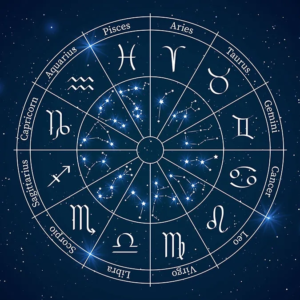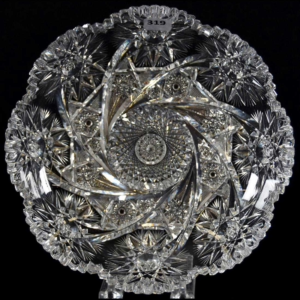Peridot Stone – properties, virtues & benefits
Rocks are arousing interest not only among geologists or architects, but also in the field of alternative medicine. Lithotherapy, which uses the vibrations of stones to treat various ailments, is a fast-growing practice. Chrysolite, a stone with a fascinating history dating back to centuries BC, is renowned for its healing properties and is widely used in lithotherapy. In this article, you’ll find a detailed presentation of this stone, from its origin to its various applications in lithotherapy.
CHARACTERISTICS OF CHRYSOLITE
- Chakra: Solar Plexus, Heart.
- Properties: Balance, Creativity, Prosperity.
- Astrology: Sun.
- Zodiac: Libra, Leo.
- Elements: Earth, Fire.
- Colors: Green, Gold.
- Hardness: 6.5-7 (Mohs scale).
- Chemical Formula: (Mg,Fe)₂SiO₄ (magnesium iron silicate).
- Associated god: Helios (Greece), Ra (Egypt).
CHRYSOLITE – HIS HISTORY
According to the Larousse, chrysolite is a variety of light-green peridot. In mineralogy, the term chrysolite comes from the Latin “chrysolithus” and means “golden stone”, although the term is used to designate a variety of species, characterized by their golden sheen. Chrysolite is a greenish-yellow gemstone composed of natural magnesium-iron silicate belonging to the peridot family and genus. Although the term chrysolite is used to designate other less precious rocks, such as jade or aquamarines, it originated on the island of Topazos, now Zabargad in the Red Sea, where it was used as early as 1500 BC by the Egyptians, who had difficulty differentiating it from emerald. Chrysolite is also known as the “stone of the sun” because of its brilliance and color, which made it easy to locate its deposits at night.
.
Chrysolite has strong symbolism among all the peoples who have known it, representing luck, joy and brotherhood in the Maghreb, glory, authority and power in Israel, and being equated with the Holy SPirit by Christians. It has also been used in ornamentation in certain churches, such as the Châsse des Rois Mages in Cologne Cathedral, as well as in alchemy for purification, protection and refocusing.
Chrysolite is an expensive and sought-after stone, with the finest gems on display in Chicago and New York museums. Over 90% of chrysolite production is mined in Arizona, although the clearest, most luminous varieties come from Kashmir, where they are used for jewelry applications. For climatic reasons, the mines are generally operated from June to September. Other chrysolite deposits are found in Brazil, Australia and China, while chrysolite can also originate from meteorites and be called palladot.
CHRYSOLITE STONE – ITS ORIGIN AND COMPOSITION
Chrysolite is a magnesium-iron silicate belonging to the olivine family, with a greenish color that depends on the amount of iron present in the rock. It is highly prized in lithotherapy for its nuanced green hue, as well as to mark the celebration of 16 years of marriage. Native to volcanic rocks, chrysolite was once common, but today it is rare and found mainly in volcanic areas in China, the USA and Burma. Its color varies from light green to greenish yellow.

CHRYSOLITE STONE – VERTIES AND PROPERTIES
CHYSOLITE ON THE PSYCHOLOGICAL LEVEL
Chrysolite is a rock with an important place in the medical, psychological and sPiritual fields. Psychologically, it helps release guilt and stress caused by past or future events, while giving mental strength and self-confidence to face difficult situations. In sPiritual terms, chrysolite is considered a beneficial energy reservoir for people suffering from melancholy and various pains. It is also believed to bring fortune and well-being to its possessor, as well as protecting against nocturnal plagues, evil spells and evil sPirits.
To take advantage of its benefits, chrysolite can be worn on the wrist, placed under the tongue or set on gold, which would activate its chemical properties. Chrysolite is also said to have mystical powers, facilitating clairvoyance and enhancing purity. It is said to help purify the heart and eliminate negative thoughts, while quickly overcoming excessive worries and fears. In the case of mental problems such as jealousy, nervousness or resentment, chrysolite is considered a useful stone for regaining emotional and sPiritual balance.
CHRYOLITE ON THE PHYSICAL LEVEL
Chrysolite stone is valued not only for its psychological benefits, but also for its positive effects on the individual’s physical appearance. It is reputed to beautify the skin and brighten the complexion by eliminating toxins. It is also useful for improving blood circulation and regulating weight by gradually eliminating fat. It is used to soothe labor pains and improve general physical well-being.
Medically speaking, chrysolite has many applications, and its effects are produced by placing it in the sun in the presence of quartz to concentrate its energy. Although expensive, this stone is considered an invaluable gem for its multiple virtues, both psychological and physical. However, its more accessible and less expensive alternative, olivine, may also have beneficial properties. It’s important to share as much information as possible about its history and benefits, so that everyone can benefit from its virtues. All in all, chrysolite stone is a fascinating rock for the many benefits it offers in a wide range of fields.

GREEN CHRYSOLITE STONE – CLEAN AND RECHARGE
To clean and recharge your Chrysolite Stone, follow these simple steps:
- Cleaning: Place the stone in a container of lukewarm, lightly salted water and leave it to soak for around 30 minutes. You can also run the stone under running water to eliminate any negative energies it has absorbed.
- Recharging: After cleaning your Chrysolite, expose it to sunlight for a few hours. The heat and solar energy will effectively recharge the stone. You can also leave your stone in the light of the full moon for a gentle, balanced recharging.
- Amplification: To enhance the energy of your Chrysolite, you can place it alongside other recharging stones, such as amethyst or rock crystal.
- Programming: Finally, take a moment to connect to your Chrysolite. Hold it in your hand and focus on your intentions and wishes for the stone. This will help align the stone’s energy with yours and optimize its beneficial properties.
WHERE DOES THE NAME CHRYSOLITE COME FROM?
The name “Chrysolite” comes from the Greek words “chrysos” and “lithos”, meaning “gold” and “stone” respectively. This name refers to the characteristic golden, verdant color of this gem. The term “chrysolite” was once used to describe a variety of green and golden-colored gemstones, but is now generally associated with peridot, a magnesium-iron silicate that exhibits this specific hue.
WHICH CHAKRA DOES CHRYSOLITE ACT ON?
Chrysolite, also known as peridot, acts primarily on two chakras: the solar plexus chakra and the heart chakra.
- Solar plexus (Manipura): Located above the navel, this chakra is associated with self-confidence, willpower and motivation. Chrysolite helps balance and activate this chakra, boosting self-esteem and personal power.
- Heart (Anahata): The heart chakra is linked to love, compassion and emotional balance. Chrysolite helps to open and harmonize this chakra, promoting better connection with others and a sense of inner peace.
Working on these two chakras, Chrysolite helps to create emotional and energetic balance, enabling better stress management and an overall sense of well-being.
WHICH ASTROLOGICAL SIGN IS ASSOCIATED WITH CHRYSOLITE?
Chrysolite, or peridot, is particularly associated with the astrological signs of Leo and Libra. These signs can benefit more from the energetic properties and benefits of this stone.
- Lion (July 23 – August 22): Chrysolite supports Leos by boosting their self-confidence and self-esteem. It also helps balance emotions and brings positive energy to overcome obstacles.
- Balance (September 23 – October 22): For Librans, Chrysolite contributes to emotional balance and promotes harmony in relationships. It stimulates creativity and insPires calm decision-making.
Although these signs are most closely related to Chrysolite, it is important to note that precious and semi-precious stones can be beneficial to all astrological signs, depending on individual needs and intentions.
SUMMARY OF THE CHRYSOLITE STONE
Chrysolite, also known as peridot, is a gem with golden, green reflections. It takes its name from the Greek words “chrysos” (gold) and “lithos” (stone). This stone acts primarily on the solar plexus and heart chakras, promoting emotional balance, self-confidence and harmony in relationships. Associated with the astrological signs of Leo and Libra, Chrysolite is also linked to the elements of Earth and Fire. Its hardness on the Mohs scale is 6.5 to 7 and its chemical formula is (Mg,Fe)₂SiO₄, a silicate of magnesium and iron. To clean and recharge this stone, soak it in lightly salted water or run it under a trickle of running water, then expose it to sunlight or a full moon.

